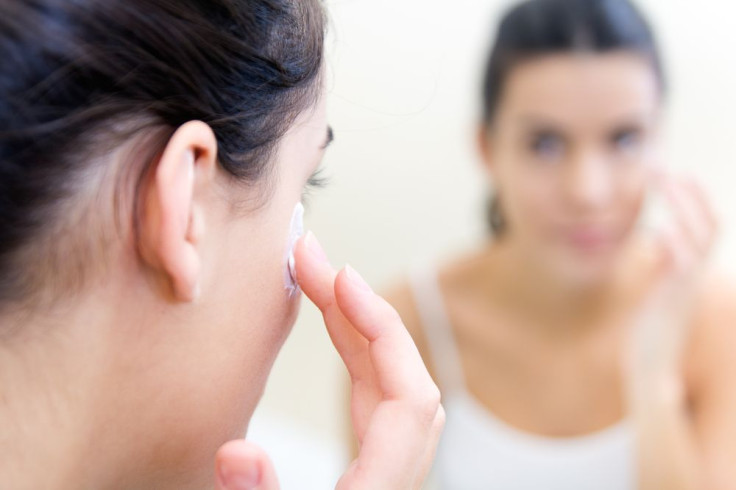Popular Acne Treatments May Cause Deadly Allergic Reactions; FDA Continues To Investigate Reports

Popular acne treatment medications are causing rare but potentially lethal allergic reactions or severe irritations that can cause difficulty breathing and swelling of the face, the Food and Drug Administration (FDA) announced Wednesday. The agency cannot pinpoint the exact ingredients that are causing the allergic reaction or if it’s a combination of other drugs used with the anti-acne products.
The over-the-counter topical treatments that people are having difficulty with contain benzoyl peroxide or salicylic acid, which the popular Proactiv, Neutrogena, MaxClarity, Ambi, Oxy, Aveeno, Clean & Clear, generics and other brands use as an active ingredient. The painful and surprising problems have been reported with gels, face washes, lotions, cleansing pads, and other types of applications. The FDA tells first-time users to be wary when trying acne products that contain benzoyl peroxide or salicylic acid as an active or inactive ingredient, since they have the potential to cause throat tightness, difficulty breathing, feeling faint, development of hives, itching, or swelling of the eyes, face, lips, or tongue.
"What they're referring to is anaphylactic shock," Dr. Cameron Rokhsar, board-certified dermatologist, fellowship-trained cosmetic surgeon, and professor of dermatology at Mount Sinai Hospital, told Medical Daily.
In order to avoid dangerous reactions, the FDA is encouraging acne treatment manufacturers to add new directions to their topical products in order to avoid a dangerous side effect. The directions will advise the user to apply a small amount to one or two affected areas on the skin for three days, and if no discomfort or strange reactions occur, they may follow the rest of the product’s application directions as they normally would.
"We've used these products for years without issues," Rokhsar said. "The real question remains if it's the active or inactive ingredients that are causing the reactions. There are a lot of inactive ingredients that adulterate these products."
Acne is a common skin condition that results from three contributing factors: overproduction of oil or hormones, irregular shedding of dead skin, and bacteria buildup. Plugged pores can create breakouts of pimples, zits, whiteheads, blackheads, nodules or cysts, depending on the severity of the acne. It most commonly appears on the face, neck, shoulders, and back in teenage years because of the increased production of hormones, but adults can be affected, too, if plagued with bad genes.
"I think it deserves further investigation but these blanketed statements by the FDA as to which products they're talking about exactly aren't helpful," Rokhsar said.
In the last 44 years, there have been 131 reports of serious allergic reactions to topical acne drugs over, and although none of the cases were fatal, 44 percent of them required hospitalization. Of the reports, most people experienced the adverse effects within 24 hours of first using the treatment.
As of yet, the FDA isn’t sure when exactly the reported allergic reactions from the benzoyl peroxide or salicylic acid products started to occur; whether it be within hours or days. However, if a product works for a particular user, that doesn't necessarily mean they should stop use now that some people are having adverse reactions to it.
"That's like saying if you read 'death has been reported by Tylenol,' that doesn't translate to 'don't take Tylenol,'" Rokhsar said.



























